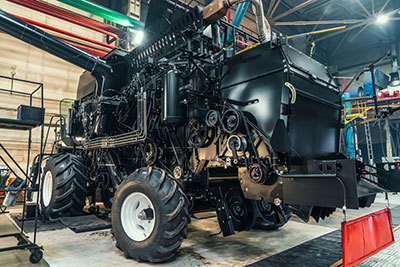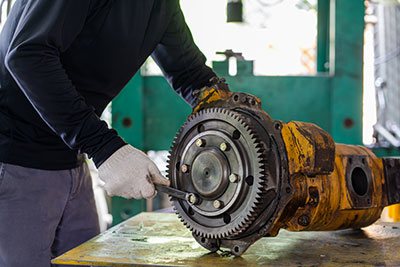Are you in the market for a reliable tractor? We know how important quality and reliable tractor is for agriculture and you don’t want to make expensive mistakes that could cost your business money. That’s why we’ve put together this NTTL tractor testing guide!
From knowing when it’s time to upgrade, to choosing the right features and safety mechanisms, here’s the ultimate guide on what buyers need to know about purchasing their next piece of equipment.
Take away key points:
- The NTTL is crucial for keeping your tractor and implements models secure and optimal
- the standards comply with the Nebraska tractor law
- You can find various report data and deice the best future machine for your needs
Nebraska Tractor Test Laboratory for all agricultural tractors
Nebraska Tractor Test Laboratory is a crucial examinator of the overall tractor performance. The institution tests tractors from various participating countries, ensures the proper development and technology for maximum power, and estimates the best use. But, to learn what the main purpose is, the history of the tests, and their importance, read the guide below.
What is the Nebraska tractor test?

The Nebraska Tractor Test Laboratory (NTTL) is a program operated by the University of Nebraska by Nebraska law. It was established in 1920 to test the performance of tractors sold in the state and make the results public.
The NTTL is the main institution for the United States and tests tractors from all over the country, including twenty-nine countries around the world. The analysis is all by the Nebraska tractor law.
The main purpose of the Nebraska test is to ensure that tractor manufacturers are providing accurate information about their products.
Agricultural engineers test tractors for power, power take-off (PTO), drawbar tests, implements, fuel consumption, speed, and other factors that affect their performance. This ensures that farmers can purchase reliable equipment that will meet their needs.
Additionally, it allows manufacturers to compare their products with those of their competitors and make improvements where necessary.
Nebraska Tractor Laboratory Test: The history
The University of Nebraska Tractor Test Laboratory (NTTL) has been the primary examining institution since its establishment in 1920.
The NTTL was created in response to the need for reliable and accurate data on tractor performance, as tractors were becoming increasingly popular in farming and other agricultural activities. It was created as a response to the Nebraska Tractor Test Act in 1919.
Since then, the Nebraska test has been responsible for testing tractors according to the Organization for Economic Co-operation and Development (OECD) standards.
The Nebraska test – OECD tractor test includes measuring fuel consumption, drawbar power, engine power, and other important metrics that are used to evaluate a tractor’s performance. The NTTL also provides test reports on fuel usage, which can be used by farmers to select the most efficient tractor for their needs.
In addition to providing data on tractors tested, the Nebraska test also serves as an educational resource for students interested in learning more about tractors and their use in agriculture.
Through its research programs and educational outreach initiatives, the Nebraska test is helping to ensure that future generations of farmers have access to reliable information about tractor operation, technology, and its applications.
Overall, the Nebraska Tractor Test Laboratory has played an important role in advancing agricultural technology over the past century. Its commitment to providing test reports on tractor performance has helped farmers make informed decisions about which machines are best suited for their operation standards.
Nebraska Tractor Test Act
The Nebraska Tractor Test Act of 1919 established the Nebraska Tractor Test Board of Engineers. It was first introduced by the Nebraska farmer Wilmot Crozier, as he bout Minneapolis Ford Model B, and found the tractor unreliable. The Nebraska test act was empowered by the Board of Regents of the University of Nebraska to test and certify all agricultural tractors sold in the state.
The purpose of the Nebraska test was to address problems with false advertising regarding tractor features and capabilities. To ensure compliance, it became illegal for a tractor that hadn’t been through the Nebraska tractor test codes to be sold in the state.
Fees collected from testing were credited to the University of Nebraska Tractor Test Cash Fund, which is used by the laboratory to defray expenses incurred in performing tests.
Larsen Tractor Test & Power Museum
The NTTL is home to the Lester F. Larsen Tractor Test and Power Museum, which houses a wide range of tested tractors from various eras. The Power Museum also serves as a representation of the technology used in tractor testing over the years, including the Larsen Tractor Test.
This test is an important part of the OECD certification process for tractors in the US and has been conducted at NTTL since its inception.
When does the NTTL conduct the tests?

The NTTL conducts tests to evaluate the performance of agricultural tractors sold to ensure that they meet certain standards.
One example of a test conducted by the Nebraska test is a fuel consumption and efficiency test. The tractor-tested data measures how much fuel a tractor uses while performing various tasks such as plowing, cultivating, mowing, and hauling. The report of this test is used to determine if tractors tested meet certain fuel efficiency standards set by the government.
Another example of a test conducted by the NTTL is an engine power test. This test measures how much power an engine can produce while operating at different speeds and under different loads. The report of this test is used to decide if a high-torque machine meets certain engine power standards set by the government.
Finally, the NTTL also conducts noise tests which measure how loud motors are when running at different speeds and under different loads. The reports are used to determine if a tractor meets certain noise level standards set by the government.
Overall, the testing helps ensure that models and implements meet certain safety and performance procedures before being sold in Nebraska or elsewhere in the United States.
How does the NTTL conduct its tests?
The Nebraska Tractor Test Laboratory will test tractors according to the standards set forth by the American Society of Agricultural and Biological Engineers (ASABE).
The first step in the operating process is to select a tractor model to be tested. The tractor must meet certain criteria, such as being of a certain size and weight, to qualify for testing. Once a model has been selected, it is prepared for testing by ensuring that all parts are operating properly and that the engine has been tuned correctly.
The next step is to conduct performance tests on the tractor. These examinations measure how well the tractor performs under various conditions, such as its power output, fuel efficiency, and speed. The results are used to obtain an overall performance rating for the tractor.
Finally, after all of the tests have been completed, a report is issued that details the results of each test and provides an overall rating for the tractor and its implement. This report serves farmers and other consumers when selecting a new or used tractor to operate on the field.
Overall, the Nebraska Tractor Test Laboratory takes great care in ensuring that all tests are conducted accurately and fairly so that consumers can make informed decisions when purchasing tractors.
How to use the tractor test data later?

Using tractor data after the NTTL conducts tests can be extremely useful. The NTTL performs tests on tractors to evaluate their performance, safety, and durability. By using the data from these tests, you can make more informed decisions when purchasing or maintaining a tractor.
For example, the NTTL tests can estimate the power of a tractor engine, how much fuel it consumes, and the efficiency it handles various terrain. This information can help you decide which model of the tractor is best suited for your needs. Additionally, the data from the tests can give you an idea of how reliable a particular tested model will be in the long run.
The data from NTTL tests also provide valuable insights into different types of operating tractors. You can learn about the differences between two-wheel drive and four-wheel drive models, as well as which type of transmission works best for certain tasks. Knowing this information ahead of time can save you time and money when selecting a new tractor.
Finally, by using the data from NTTL tests, you can compare different models of tractors to see which one offers the most value for your money. This information can help ensure that you get the right tractor for your needs without spending too much money on unnecessary features or upgrades.
Overall, using tractor data after NTTL testing is a valuable tool for tractor maintenance or purchase. With this information at hand, you’ll be able to make smarter decisions and get more out of your investment in a newly-tested or used tractor.
FAQs
Why is the Nebraska tractor test important?
The test is important as it shows tractor performance, safety, and efficiency. It’s also crucial for helping farmers make informed decisions when purchasing working equipment and ensuring the machines meet all safety standards. The analyses also help manufacturers develop and upgrade their models for better working and security conditions.
What is the testing code for the tractor?
The testing code for the tractor is the OECD Tractors Standard Code. This code allows participating countries to perform tractor tests according to harmonized procedures and obtain official results from the Organisation for Economic Co-operation and Development (OECD).
The SAE standard J2708_200208, ISO/OECD 789-10:2006(en), IS 5994 (1998), and 40 CFR § 1037.665 are all related codes that provide additional information on the testing of tractors.
What should be the test conditions for testing a tractor?
– The main PTO test should be conducted to assess the PTO performance.
– A belt or pulley shaft test should also be done to measure the drawbar performance, hydraulic lift capacity, and other related factors.
– An engine test should be done to measure the fuel consumption, temperature, and relative humidity conditions at maximum load.
– A drawbar test should be conducted to calculate the forward speed, wheel slip, engine speed, and other related parameters.
– A center of gravity and visibility for the driver’s seat test should also be conducted.
Why is tractor testing needed?
The testing is an important part of ensuring that tractors are reliable and safe for use. It helps to ensure that the tractors meet certain standards in terms of power, fuel efficiency, and safety. The testing also helps to identify any potential issues with a tractor before it is put into use, which can help to reduce the risk of accidents or mechanical failures.
Summary
The NTTL standards are a critical part of ensuring that machines are well cared for and running properly. A regular examination can help identify any issues before they get bigger and cause serious problems down the line.
